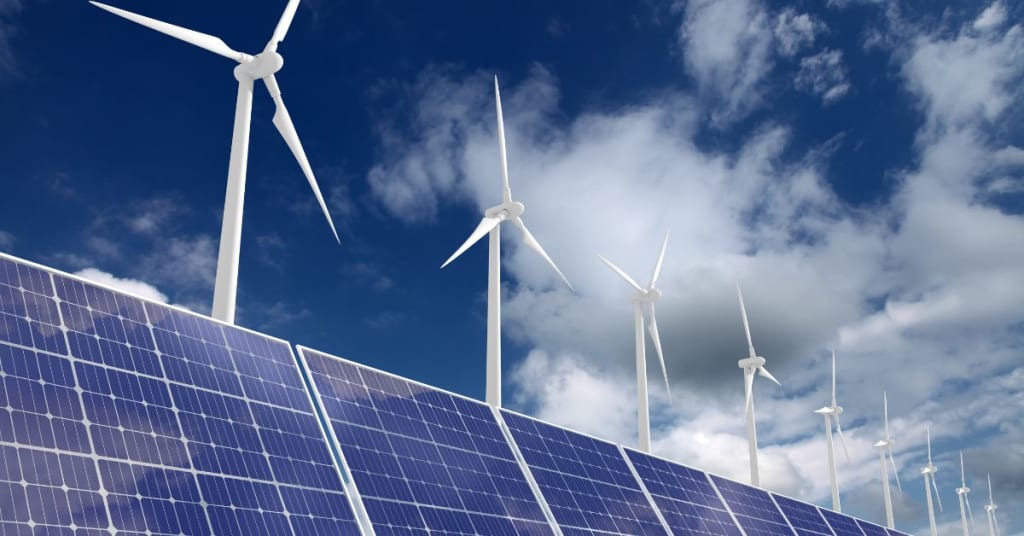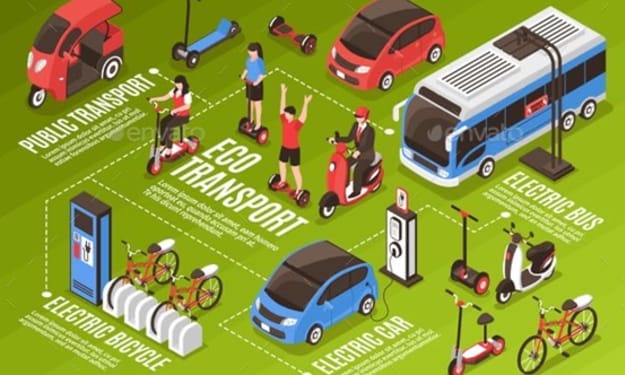Ways to Contribute To The Cushioning Of Climate Change From Your Immediate Environment.....ARTICLE 1
RENEWABLE ENERGY ADOPTION.

LET US START WITH WHAT IS CLIMATE CHANGE
Climate change refers to long-term alterations in the Earth's average weather patterns and global climate systems. It is primarily driven by human activities that release greenhouse gases, such as carbon dioxide (CO2), methane (CH4), and nitrous oxide (N2O), into the atmosphere. These gases trap heat from the sun, leading to an enhanced greenhouse effect and an overall warming of the planet.
IMPACT OF CLIMATE CHANGE (REASON WHY WE SHOULD ALL CONTRIBUTE FROM OUR IMMEDIATE ENVIRONMENT TO MITIGATE AGAINST IT)
- Rising Temperatures: Global temperatures are increasing, leading to heatwaves, melting glaciers, and rising sea levels.
- Sea Level Rise: As glaciers and ice sheets melt and oceans warm, sea levels rise, threatening coastal communities and ecosystems.
- Extreme Weather Events: Climate change can intensify and increase the frequency of extreme weather events like hurricanes, droughts, and heavy rainfall.
- Ecosystem Disruption: Species may struggle to adapt to rapidly changing conditions, leading to shifts in ecosystems and loss of biodiversity.
- Ocean Acidification: Increased CO2 levels in the atmosphere are also absorbed by the oceans, causing ocean acidification, which can harm marine life and coral reefs.
Certainly, mitigating the effects of climate change at the local level is essential for a sustainable future, and there are numerous ways to mitigate the impacts of climate change on your immediate environment. In this article we are going to explore the power of the use of RENEWABLE ENERGY in fighting climate change
Embracing the Power of Renewables: A Sustainable Future for Our Environment
In the face of escalating climate change, the urgency to transition towards cleaner energy sources has never been more pressing. As we grapple with the consequences of fossil fuel reliance, the adoption of renewable energy technologies emerges as a beacon of hope for a sustainable future. This article explores four key renewable energy strategies that hold the potential to reshape our energy landscape and cushion the impacts of climate change on our immediate environment.
1. Solar Panels: Capturing Sunshine's Promise
The iconic sight of solar panels adorning rooftops has become a symbol of progress toward a greener planet. Solar photovoltaic (PV) systems are not just a means to generate electricity, but also a statement of environmental consciousness. Harnessing the sun's abundant energy, solar panels offer a reliable and inexhaustible source of power. They silently convert sunlight into electricity without emitting greenhouse gases or polluting our air. By installing solar panels on rooftops, communities can not only meet their energy needs but also contribute surplus power back to the grid, reducing their carbon footprint.
2. Wind Turbines: Riding the Winds of Change
The gentle whir of wind turbines spinning gracefully across landscapes signifies more than just a picturesque scene. It symbolizes the wind's potential to drive change in the energy sector. Wind power, harnessed through modern wind turbines, offers a scalable and renewable solution. These towering structures capture the kinetic energy of the wind and convert it into electricity, without the need for fuel or water consumption. Whether on land or at sea, wind turbines generate clean energy while preserving our planet's resources.
3. Small-Scale Hydroelectric Projects: Navigating Rivers Towards Sustainability
Rivers and streams that weave through our landscapes can become conduits of sustainability through small-scale hydroelectric projects. These projects utilize the flow of water to turn turbines and generate electricity. Unlike large dams that disrupt ecosystems, small-scale hydro projects have minimal environmental impact. By tapping into the force of flowing water, communities can secure a constant source of renewable energy while preserving aquatic ecosystems and promoting biodiversity.
4. Geothermal Heating and Cooling: Tapping into Earth's Benevolence
Beneath our feet lies an untapped source of energy - the Earth's natural heat. Geothermal heating and cooling systems harness this heat to regulate indoor climates efficiently. Through heat pumps, they transfer warmth from the ground into buildings during winter and expel excess heat during summer. This sustainable technology reduces the need for conventional heating and cooling methods that rely on fossil fuels. Embracing geothermal systems not only reduces carbon emissions but also paves the way for energy-efficient buildings that align with our climate goals.
Incorporating these renewable energy strategies into our immediate environment offers an array of benefits that extend far beyond carbon reduction:
A Greener Bottom Line: While the initial investment may seem substantial, the long-term economic gains of renewables are undeniable. Reduced energy bills and potential income from surplus energy generation contribute to financial stability.
Job Creation and Local Empowerment: The transition to renewable energy is not merely a technological shift but a socio-economic transformation. The installation, maintenance, and management of these systems create local job opportunities, empowering communities and stimulating economic growth.
Climate Resilience: By diversifying energy sources, communities become less susceptible to the fluctuations of fossil fuel prices and supply disruptions. This enhances climate resilience and fosters energy independence.
Technological Advancement: The pursuit of renewable energy fosters innovation, leading to more efficient and accessible technologies. As research and development progress, costs decrease, making renewables even more viable.
However, the journey toward renewable energy adoption is not devoid of challenges:
Overcoming the Initial Hurdle: The upfront costs of implementing these systems can be a barrier. Governments and financial institutions need to offer incentives, grants, and financing options to encourage adoption.
Tailoring to Local Context: Renewable energy solutions should be tailored to local climates, landscapes, and energy demand. Customization ensures optimal energy generation and efficiency.
Navigating Regulations: Navigating local regulations, permits, and zoning requirements can be complex. Governments need to streamline these processes to facilitate smoother adoption.
Ensuring Maintenance: Regular maintenance is essential for ensuring consistent energy production and system longevity. Communities must be educated about proper maintenance practices.
In conclusion, the integration of renewable energy sources, such as solar panels, wind turbines, small-scale hydroelectric projects, and geothermal systems, presents an opportunity to revolutionize the way we produce and consume energy. By embracing these technologies, we forge a path toward sustainability, reduce greenhouse gas emissions, and enhance our resilience in the face of a changing climate. The momentum toward renewable energy adoption must be accelerated through collaborative efforts between governments, businesses, and communities. With determination and collective action, we can cushion the impacts of climate change on our immediate environment and secure a brighter future for generations to come.





Comments
There are no comments for this story
Be the first to respond and start the conversation.